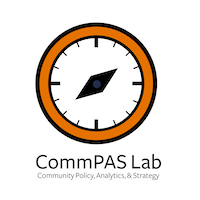Imagining Equitable Policy

Course site for LPPS 5360 Imagining Equitable Policy, Fall 2021
Centering people: Issue Briefs
One starting point for us will be the assumption that equitable policy centers people, that policies are oriented toward solving the problems people are facing or in creating conditions for people to thrive. Thus, our applied work will center people. The distinction requires a mental shift away from abstractions – homelessness – to concrete experiences of people who live without stable housing. In terms of equity, we’ll seek to emphasize the experience of people of color and others who have been historically marginalized, excluded, or systematically targeted by harmful policies.
Potential Populations
Each team will focus on a particular population for which you will identify a primary problem or need which might be (or is being) addressed through public policy. You’ll deepen and develop your understanding and evaluation through a series of briefs.
Your team may choose one of the following populations or propose an alternative population. All of these could use more focus and narrowing (e.g., geographically, intersectionally, occupationally, economically, linguistically, or other overlapping dimensions):
- Displaced workers
- Women in the military
- Migrants on the southern border
- Coastal populations
- Formerly incarcerated people
- Afghans seeking refuge
- Transgender youth
- Residents of drought- or heat-impacted places
- Unhoused persons
- People earning less than 30% of AMI
- Returning veterans
- Victims of human trafficking
- Frontline workers
- Pregnant woman/women with young children
- Native Americans on reservations
Newly proposed populations
- Transgender people in the military
- Children in Title I schools (schools with a high proportion of children from low-income families)
- Children living in poverty
- First-generation immigrants, undocumented immigrants, immigrant communities
- Teenage mothers
- Uninsured and underinsured people
- People with disabilities
- Climate refugees
- Students
We will identify teams on Wednesday, 9/1.Your team will identify your proposed choice by Monday, 9/6, on a shared google doc.
Pre-brief Sketch
Due Wednesday, 9/15 (by 11:59pm)
The initial pre-brief sketch will be completed individually. This sketch may be written in prose or in bulleted form; the ideas you’re generating are starting points. In the pre-brief sketches, you’ll address:
- The primary problem your selected population is experiencing. What is a central challenge, condition, barrier, or need?
- Describe how experience of the problem varies across people, across places. Is your population of interest more impacted by the problem than other groups? Are their places in which your population is more impacted?
- Outline the causes and consequences of the problem. What are the primary contributors and what are the likely outcomes for people experiencing the problem?
Team Policy Briefs
Each team will complete a series of four briefs.
-
Problem Formulation (due Friday, 10/1, by 11:59pm): In the first team brief, you’ll share your individual pre-brief sketches with one another to learn from one another and negotiate a focus. You’ll revise and develop your selected problem focus to explain further the primary problem, how it varies across sub-populations, and the likely causes and consequences. In addition, you’ll consider alternative problem representations (think Bacchi’s work) and assess how the problem identification and representation can contribute to more equitable solutions.
-
Policy Interventions: In the second team brief, you’ll develop a menu of policy alternatives, interventions that will reduce the incidence of the problem by addressing causes or lessen the negative consequences of the problem for your focal population. In a climate change scenario, for example, we can reduce our CO2 emissions or we can build resilient cities. Find three policy interventions and explain how each will address the problem you’ve identified. Make a case for which policy intervention will generate the most equitable outcome. For this chosen policy, identify the relevant stakeholders beyond the target population (think advocacy coalitions). What are the potential tradeoffs with equity inherent in your chosen intervention?
-
Policy Implementation: In the third team brief, you’ll evaluate the policy you identified above with respect to implementation. Who should be involved in the policy design (think stakeholders above)? How will your target population interact with or access the policy benefits? Who will be executing the policy and how will that impact the policy experience (e.g., staffing, training, discretion, gatekeeping, culture)? What might the design of the policy communicate to the target population? How might administrative burdens be reduced?
-
Equity Recommendations: You’ve researched, written, and reflected on what it could look like to embed equity as a policy purpose. In this final brief, you’ll revisit the three stages represented by the prior policy briefs to consider what you see as the primary barrier to equity for your population and problem of focus within each decision point. That is, what are the political hurdles or collective stumbling blocks to achieving equity that arise:
- (1) in problem identification and representation – Are there social constructions or understandings or problems or conceptions of responsibility or assumptions about who’s behavior must change that are preventing progress towards more equitable outcomes?
- (2) in policy interventions and analysis – Does current policy create inequity? Are proposed policies in conflict with other forces or policies that contribute to inequity?
- (3) in implementation and design – Are we doing reasonable things, but not well? Are current processes problematic? Is current resourcing simply too low?
After assessing the barriers at each step, imagine you’re facing a closing policy window. At which of the above stages would you focus attention and advocacy? If you could overcome the hurdles at only one stage, which would you prioritize as having the biggest long-term impact?